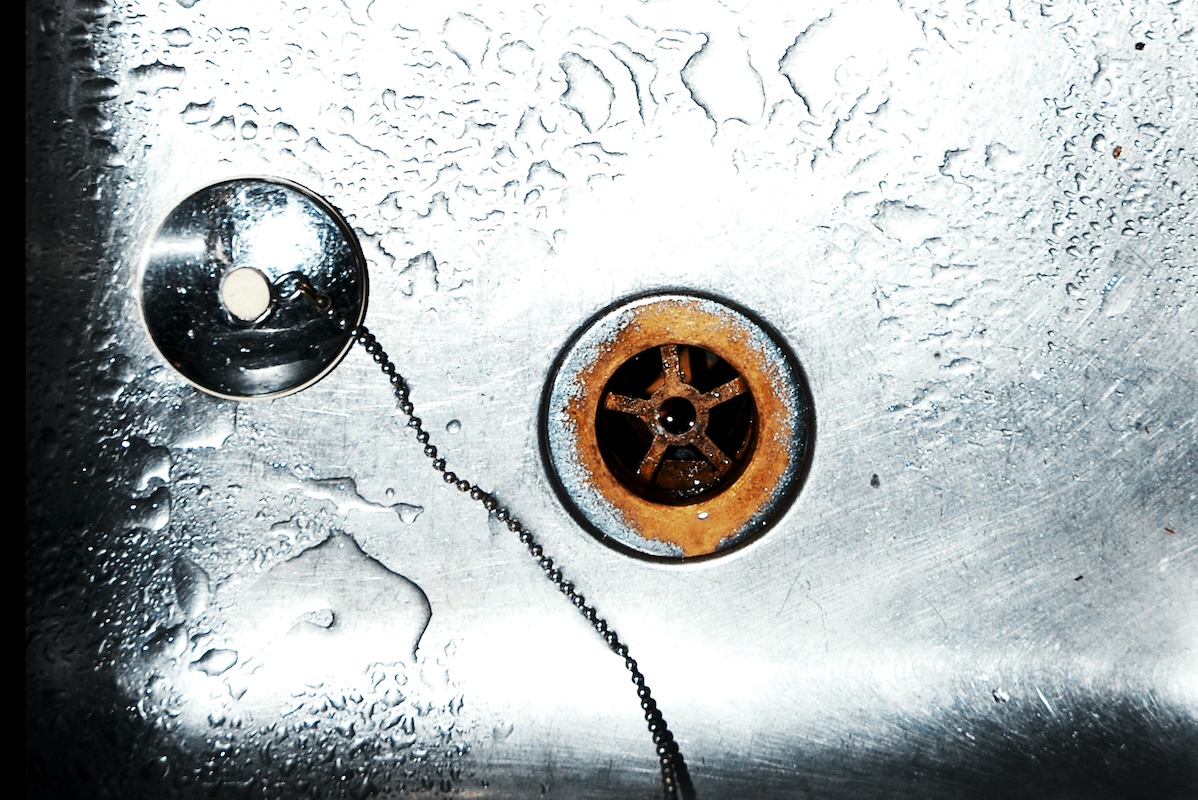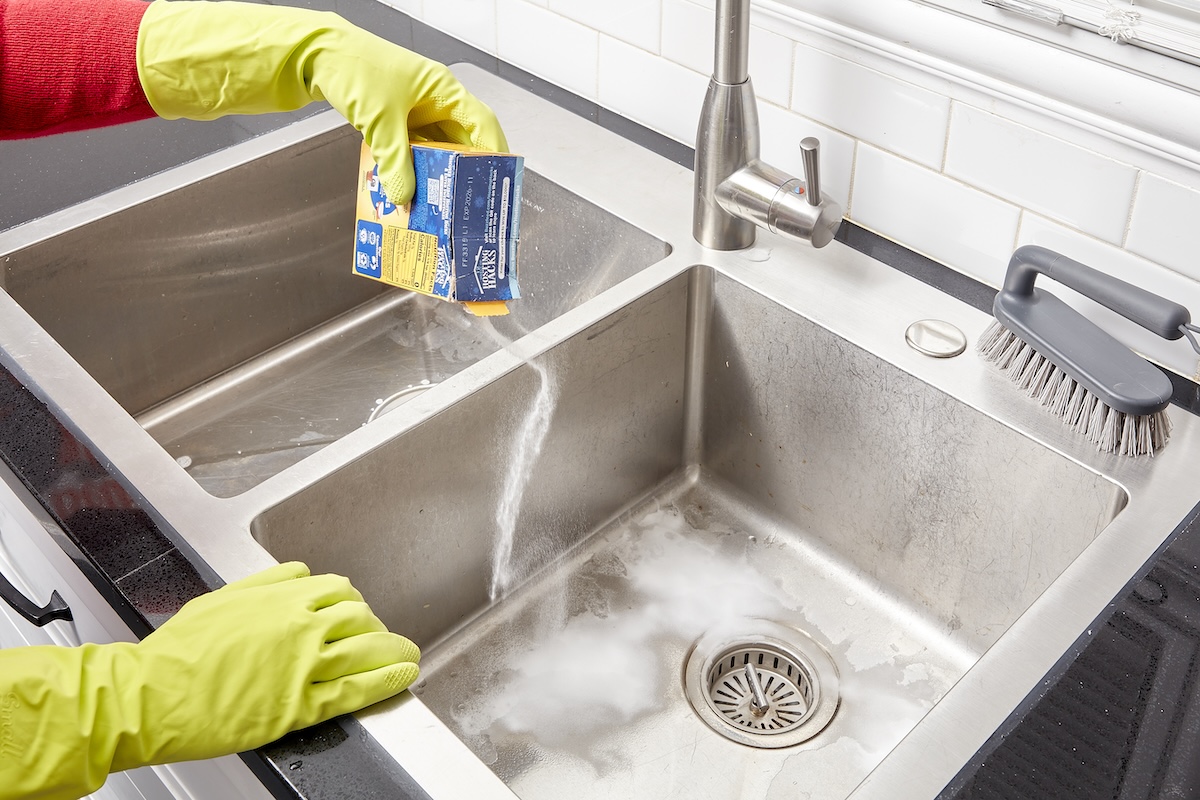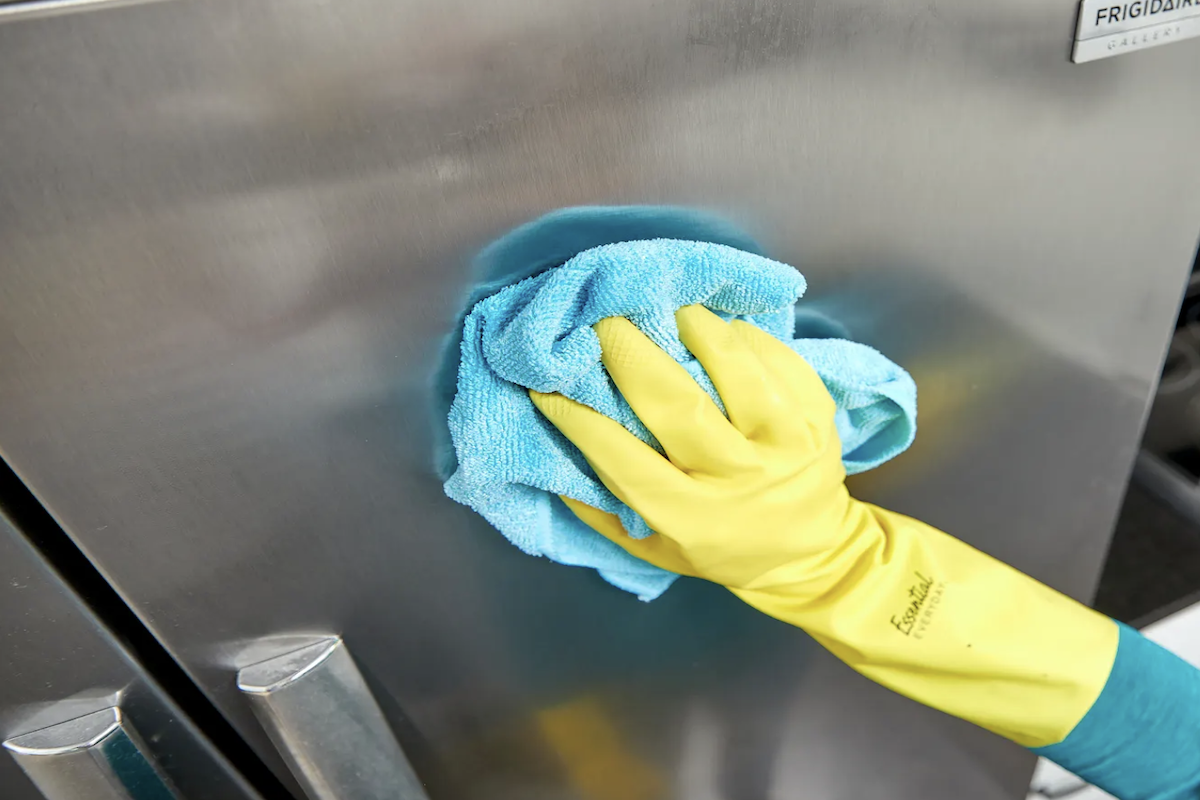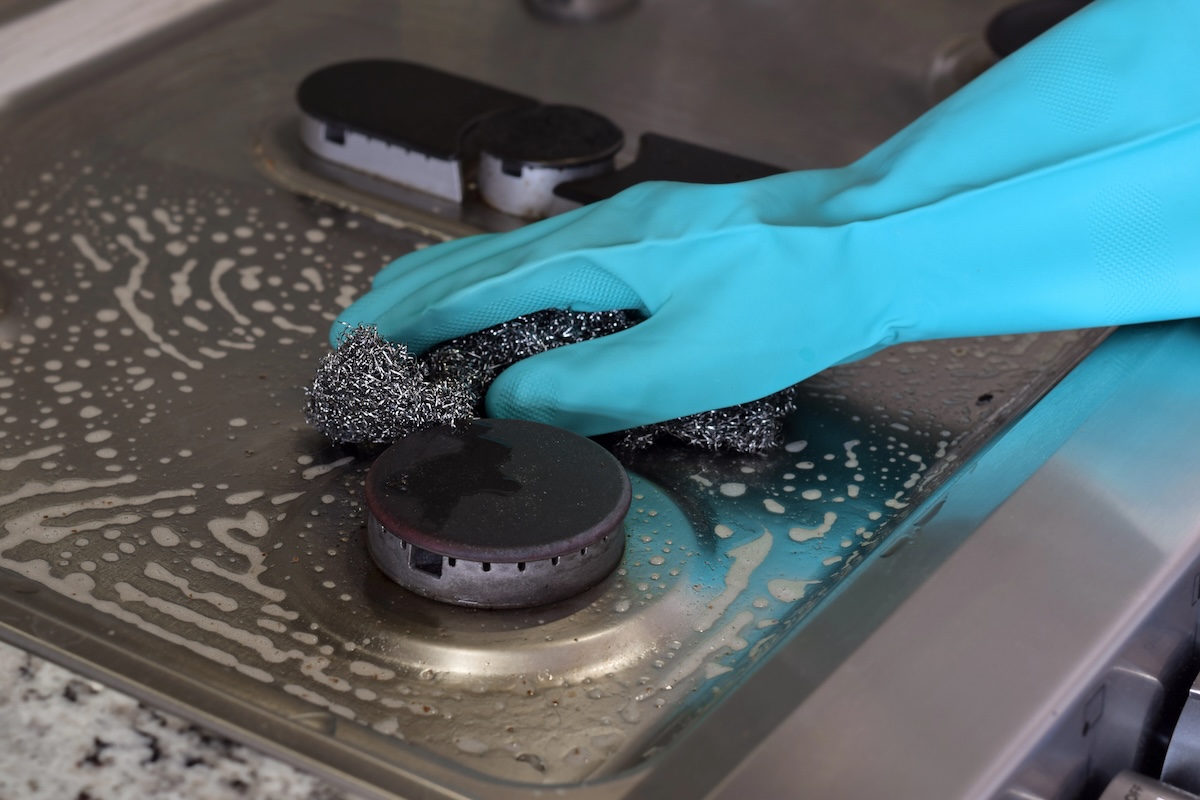

We may earn revenue from the products available on this page and participate in affiliate programs. Learn More ›
Stainless steel may be prized for its sleek, polished look, but despite the name, it’s not entirely immune to rust. While the chromium in stainless steel helps form a protective layer that resists corrosion, exposure to water, salt, and acidic foods can break that barrier down, especially if surfaces aren’t cleaned or dried properly.
The good news? Rust on stainless steel is usually only surface level and can be removed with a little effort, and often with ingredients you already have in your kitchen. Whether it’s your sink, countertops, or cookware that’s showing signs of tarnish, these simple methods can help restore their original shine.
3 Ways to Remove Rust from Stainless Steel
Though it may look like it will never come off, you don’t need heavy-duty chemicals or professional tools to get rid of rust. Many effective rust removers—like baking soda, vinegar, or even lemon juice—are likely already in your kitchen or garage. Below, we elaborate on several tried-and-true methods to help you restore your stainless steel surfaces, from quick fixes to tougher treatments for more stubborn stains. Choose the one that fits your needs and get started.
1. Baking Soda

SUPPLIES
Baking soda
Soft cloth
Soft bristle brush
Paper towels
Baking soda is a gentle, nontoxic abrasive that can lift rust without scratching stainless steel surfaces. Whether you’re spot-treating a pan or cleaning a stainless steel sink basin, here’s how to use it effectively:
- Make a paste by mixing 1 tablespoon of baking soda with 2 cups of water.
- Apply the paste directly onto the rusted area, rubbing gently in the direction of the grain with a soft cloth.
- For larger areas, skip the paste and sprinkle baking soda directly onto the damp surface, coating the rust completely.
- Let it sit for 30 minutes to 1 hour to help break down the corrosion.
- Scrub gently with a soft-bristle brush or old toothbrush.
- Rinse thoroughly and dry with a clean towel or paper towel to prevent future rust.
For stubborn rust spots that don’t come off easily, repeat the process or let the baking soda sit longer before scrubbing. Avoid using steel wool or harsh pads, as they can scratch the finish.
2. Lemon Juice
Lemon juice contains citric acid, which can help break down rust while leaving behind a fresh, clean scent. Simply squeeze fresh lemon juice directly onto the rusted area or soak a soft cloth in the juice and apply it to the surface.
Let it sit for about 5 to 10 minutes, then scrub gently with a non-abrasive sponge or cloth, following the direction of the grain. Rinse thoroughly with water and dry the area completely. For extra cleaning power, you can mix lemon juice with a bit of salt to create a mild abrasive paste.
3. Vinegar

White vinegar is a natural acid that can dissolve rust without damaging stainless steel. To use it, soak a clean cloth or paper towel in distilled white vinegar and lay it over the rusted area. Let it sit for 5 to 10 minutes to break down the oxidation.
After soaking, gently scrub the area with a soft cloth or sponge, always following the direction of the steel’s grain. Once the rust is gone, rinse the surface thoroughly with water and dry it completely. For tougher stains, you can repeat the process or combine vinegar with baking soda for a more powerful fizzing action.
4. WD-40
WD-40 is more than just a lubricant: It’s also effective at loosening and dissolving light surface rust. Spray a small amount directly onto the rusted area and let it sit for a few minutes to penetrate the corrosion.
Afterward, gently scrub the area with a soft cloth or sponge, again following the grain of the stainless steel. Wipe away any excess residue with a clean, damp cloth, then dry the surface completely. For larger or stubborn rust patches, you may need to repeat the process or let the product sit a bit longer before scrubbing.
5. Oxalic Acid Cleaner
SUPPLIES
Cleaner that contains oxalic acid, such as Bar Keepers Friend
Soft sponge
When gentler solutions like baking soda or vinegar fall short, oxalic acid–based cleaners, such as Bar Keepers Friend or Kleen King, can be highly effective at lifting rust without scratching stainless steel.
- Choose your cleaner. Use a product that contains oxalic acid, like Bar Keepers Friend or Kleen King. Avoid any abrasive cleaners with chlorides, which can damage the steel’s protective chromium layer.
- Apply to the rust. Follow the product instructions and apply directly to the rusted area using a soft, damp sponge.
- Rub in the direction of the grain. Apply light pressure and work the cleaner along the steel’s grain lines to avoid micro-scratches.
This method works especially well for rust caused by wet cast iron or other metals left sitting in the sink. Just a little elbow grease goes a long way toward restoring your stainless steel’s shine.
Tips for Stainless Steel Rust Removal
Keep your stainless steel looking sharp with these quick, effective maintenance and cleaning habits:
- Wipe with the grain. Whether scrubbing rust or just doing daily maintenance, always clean in the direction of the grain to avoid scratching.
- Dry completely. Moisture is rust’s best friend—dry surfaces thoroughly after cleaning or spills.
- Use soft tools. Stick to soft cloths, non-abrasive sponges, or nylon brushes. Avoid rough pads that can scuff the surface.
- Act fast on spills. Acidic or salty spills (like tomato sauce or salt water) can eat away at the protective layer if left sitting.
- Clean regularly. A mix of warm water and mild dish soap is usually all you need for routine shine and fingerprint removal.
Avoid Using These Products on Stainless Steel

Even well-intentioned cleaners can do more harm than good. Skip these products and tools to protect your surfaces:
- Bleach and any cleaner containing chlorine
- Steel wool or metal-bristled brushes
- Abrasive powders that don’t specify stainless steel use
- Cleaners with fluorine, iodine, bromine, or chlorine compounds
- Rust removers designed for other metals (they may be too harsh)
How to Prevent Rust on Stainless Steel
The best way to remove rust on stainless steel is to stop it before it starts. That means minimizing moisture, especially around high-use areas like sinks, dishwashers, and refrigerators. Wipe up spills quickly—especially anything salty or acidic—and make sure to dry surfaces thoroughly after cleaning or rinsing.
For regular upkeep, wash stainless steel with warm water and a mild dish soap using a soft cloth or sponge. Always rinse and dry completely to prevent water spots and corrosion. Avoid using harsh chemicals or abrasive tools, and if you’re ever unsure, check your appliance or product manual for manufacturer-recommended cleaners. With a little routine care, your stainless steel will stay sleek, shiny, and rust-free for years to come.
